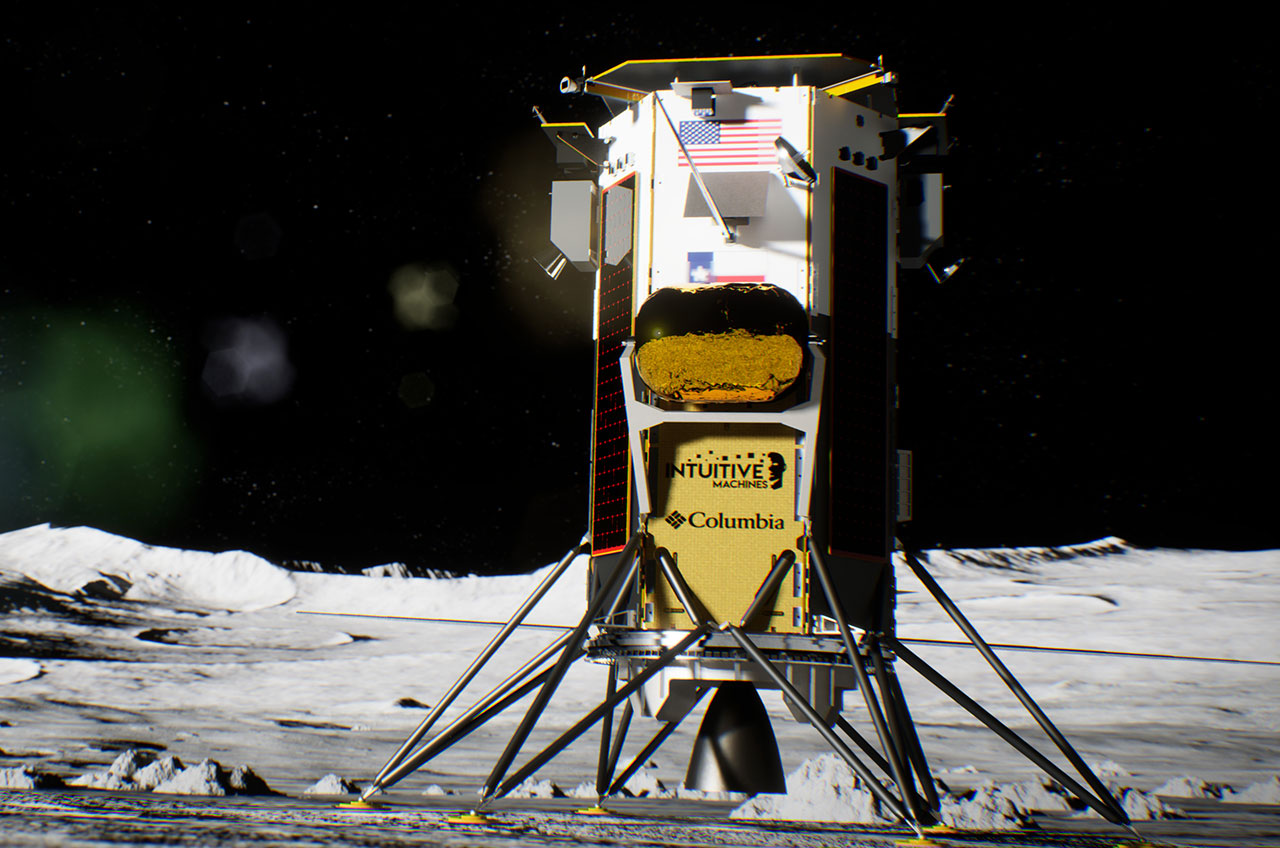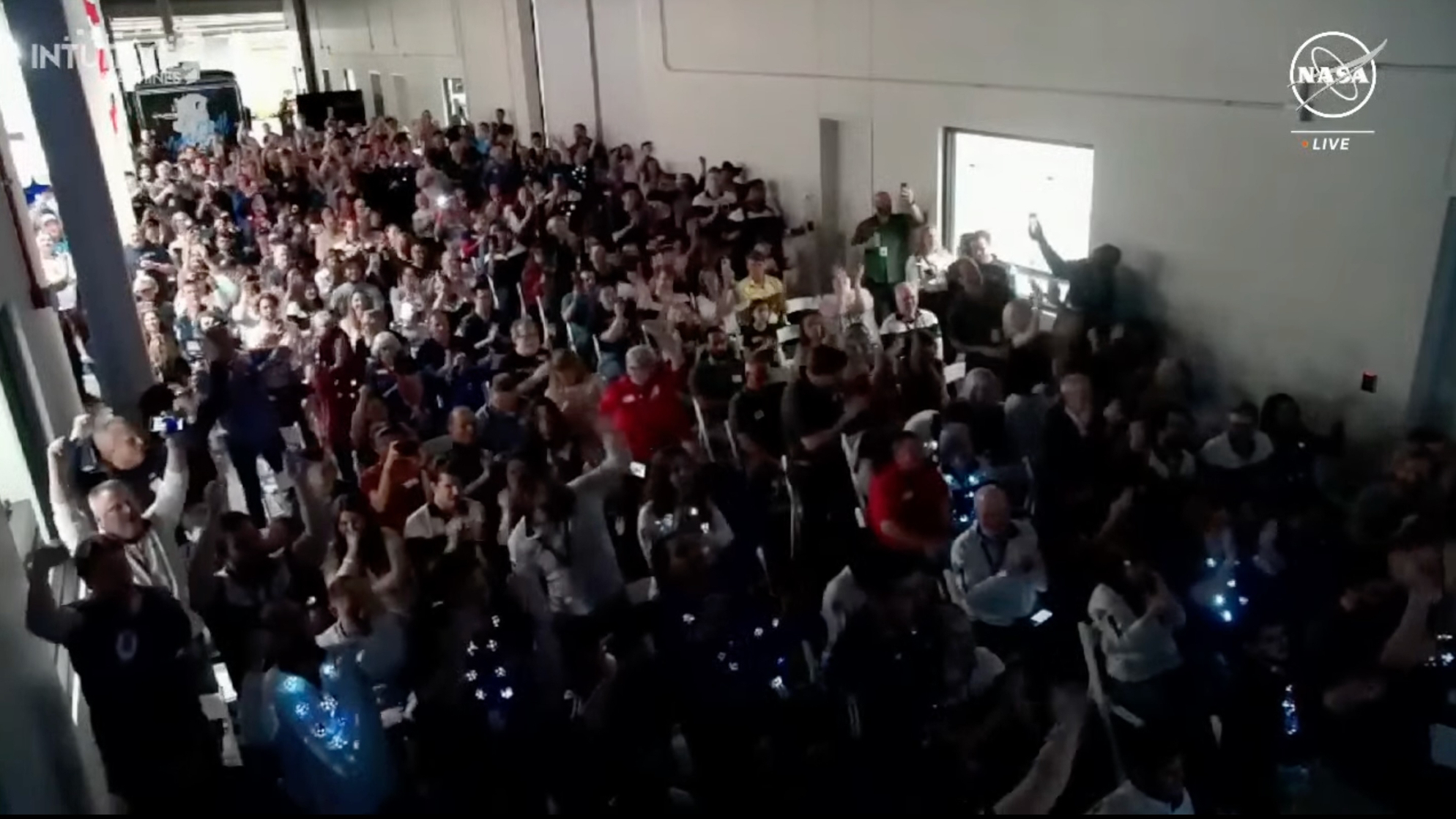
Sorry, space fans: We won't be getting ground-level views of the first moon landing by an American spacecraft since the Apollo era.
That epic touchdown came courtesy of Intuitive Machines' Odysseus lander, which lowered itself onto the gray dirt about 190 miles (300 kilometers) from the moon's south pole yesterday (Feb. 22).
The success was hard-won. As they prepared for descent yesterday, mission team members discovered that Odysseus' laser rangefinders, which the lander used to determine its altitude and horizontal velocity, weren't working properly. So they switched over to an experimental NASA instrument that Odysseus was carrying, pressing it into service for vital landing operations.
The strategy worked, helping Odysseus become the first private craft ever to soft-land on the moon. But it appears the navigation issue affected one of the other payloads aboard the lander — EagleCam, an instrument built by students at Embry-Riddle Aeronautical University (ERAU) that was designed to deploy from Odysseus about 100 feet (30 meters) above the lunar surface and photograph the craft's touchdown from below.
Due to the navigation complications, which required the uplink of a software patch, "the decision was made to power down EagleCam during landing and not deploy the device during Odysseus' final descent," Mike Cavaliere, ERAU's director of news and media relations, wrote in an update today (Feb. 23).
"However, both the Intuitive Machines and EagleCam teams still plan to deploy EagleCam and capture images of the lander on the lunar surface as the mission continues," he added. "The time of deployment is currently unknown. Stay tuned! More information will be released as soon as it becomes available."
We'll learn more about Odysseus' mission, which Intuitive Machines calls IM-1, a short time from now: The company and NASA are holding a press conference today at 5 p.m. EST (2200 GMT). You can watch it here on Space.com.

Odysseus launched atop a SpaceX Falcon 9 rocket on Feb. 15 and arrived in lunar orbit six days later.
The lander is carrying 12 payloads. Six of them are NASA science instruments put on board via the agency's Commercial Lunar Payload Services program, or CLPS. The NASA gear is gathering a variety of data about the moon, to help the agency prepare for future crewed landings by its Artemis program.
The NASA payload that strutted its stuff yesterday is called NDL (short for Navigation Doppler Lidar for Precise Velocity and Range Sensing). This instrument used LIDAR (light detection and ranging) technology to gather super-precise data during Odysseus' descent and landing.
The other six payloads on IM-1 were provided by a variety of organizations, including ERAU and Columbia Sportswear.







